Visit to the Avocado Farm
¡Buenos Días! Our third day in Chile started bright and early at 8 am with a visit to the avocado farm “Agrícola La Puntilla Limitada”. Upon arriving we were greeted with hills full of beautiful avocado trees as well as rows of mandarin trees. Our guide was incredibly knowledgeable and taught us all about growing avocadoes in Chile.
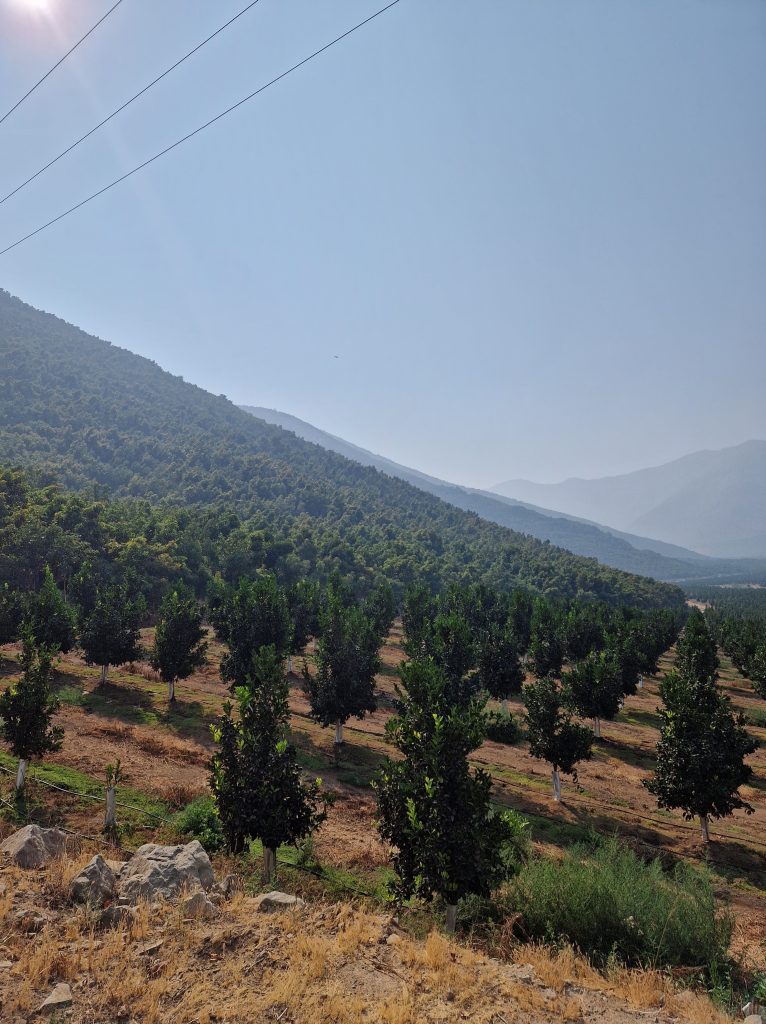
There are many challenges a Chilean avocado farmer faces that are unique from the challenges of other Latin American avocado farmers, and the same applies to benefits. Some examples of challenges are the differences in climate and geographical location.
We were told that 20 years ago the flatlands in region also had avocadoes because the cold northern winds didn’t arrive there. Now, however, the winds have increased a lot. Thus, the farmers had to find a way to protect their avocado plants and found a solution by planting the avocado trees on the hills and the mandarin trees in the flatlands. This way, the cold air comes down from the air and pools in the flatlands, which does not harm the mandarin trees. The cold temperatures also come with benefits, such as a lack of insects that could harm the plants, leading to Chilean avocadoes being largely free from pesticides and high in nutrients. However, having less insects also means less bees, which is one of the reasons, next to the low temperatures, why Chile produces much less avocadoes than their Central American counterparts.

Another important challenge that the avocado farmers have to deal with is scarce water resources due to climate change and the lack of rain in recent years. To avoid wasting their valuable resource, the farmers invented instruments which they put in the soil to indicate how much water the plants have or still need. They also have technology indicating wat nutrients or chemicals each plant is missing, and can then infuse the plant with whatever it is that they need.
It is a common thing for Europeans to question the Chilean farmers about their usage of water to grow avocadoes instead of using it for things the Europeans consider more important. Our guide informed us about their efficient water usage with the use of pipes and tubes transporting the water uphill and distributing it across different fields. Additionally, the area that the large avocado fields had been planted in used to be a dry and empty terrain. Now, while the avocado farm is commercial, it also is a large forest that produces oxygen.
The tour was extremely insightful and impressive as we learnt how much knowledge a farmer needs to have and acquire to provide the best they can for their plants and to achieve the best results. Our guide was extremely kind and happy to answer any questions that we had, and at the end of the tour we were kindly given bottles of ice cold water to fight off the heat that was approaching.

The Errazuriz Vineyard
As we set off on our journey to the Errazuriz vineyard in Chile, our hearts were pounding with anticipation and our stomachs growling from hunger. We arrived at the vineyard, and the sight that greeted us was breathtaking. Rows upon rows of vineyards stretched as far as the eye could see and a James Bond villain-esque architecture. The fresh, crisp air was filled with the aroma of grapes, and we knew we were in for a treat.
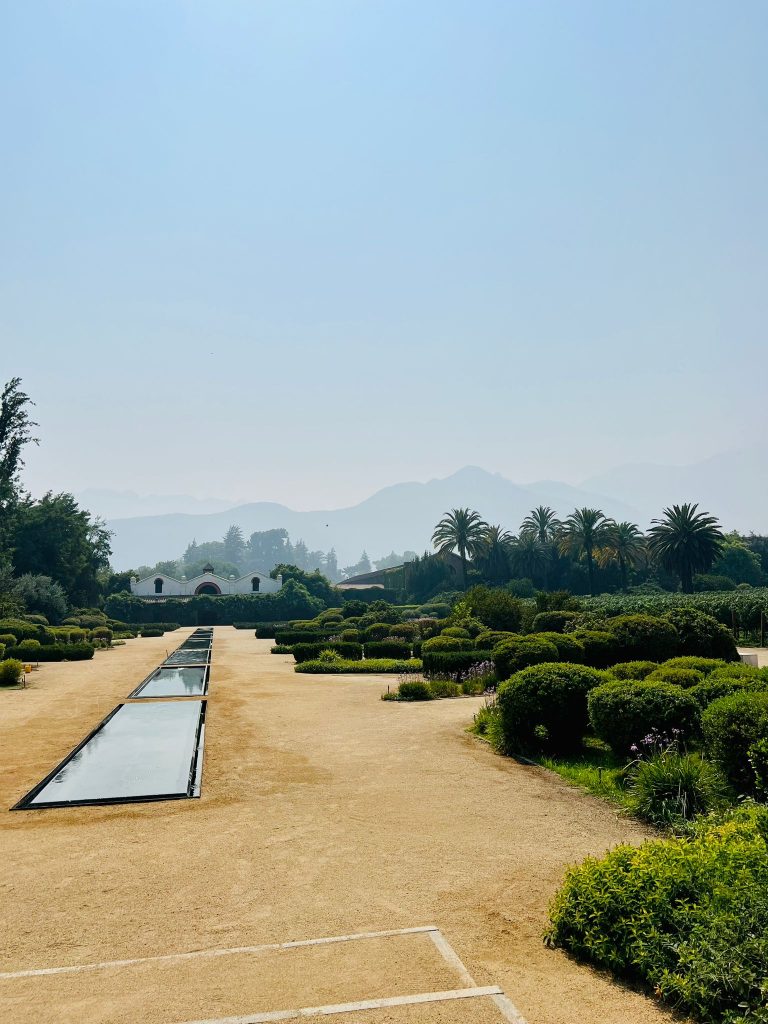
We started our tour by exploring the vineyards and learning about the different varieties of grapes grown there. Our guide explained how the unique geography and climate of the region created the perfect conditions for growing some of the world’s finest wine grapes and later explained the history of the Errazuriz family.
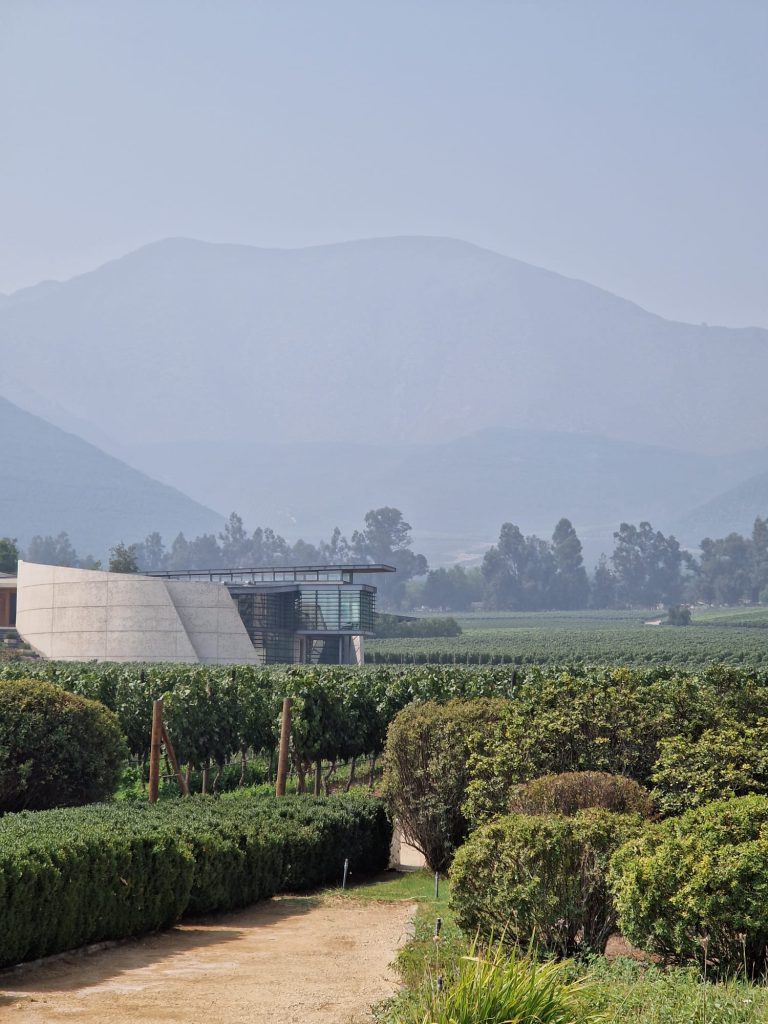
After our vineyard tour, we headed to the winery where we were taken on a journey of the winemaking process. We saw the barrels where the wine was aged and learned how the winemakers carefully crafted each bottle of wine to perfection. Their secret: Gravity and time.
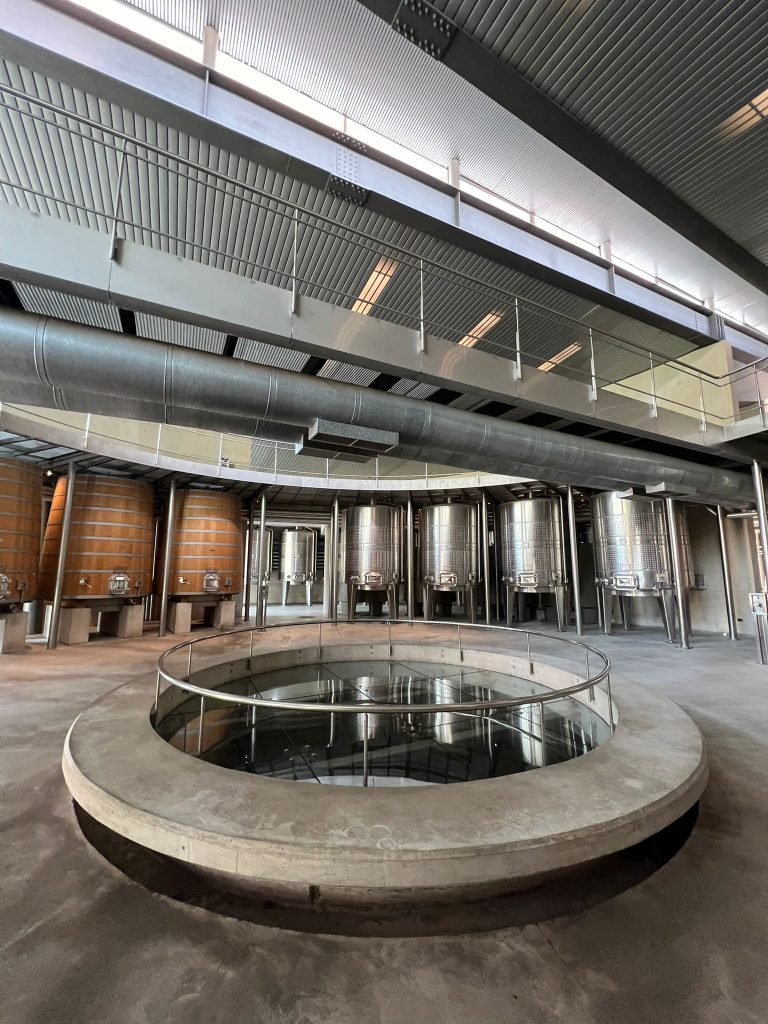
But the highlight of our visit was the wine tasting. We savored some of the most exquisite wines, each with its own distinct character and taste, most of them quite fruity. We were in wine heaven, literally enjoying the fruits of the vineyard’s labor.

We left with a newfound appreciation for the art of winemaking and a deeper connection to the beautiful country of Chile.
Viña von Siebenthal
Following the visit to the Errazuriz vineyard we had a privilege to visit Viña von Siebenthal – a winery founded and run by a Swiss citizen from the Ticino region, who moved to Chile 25 years ago in pursuit of his dream to produce his own wine.
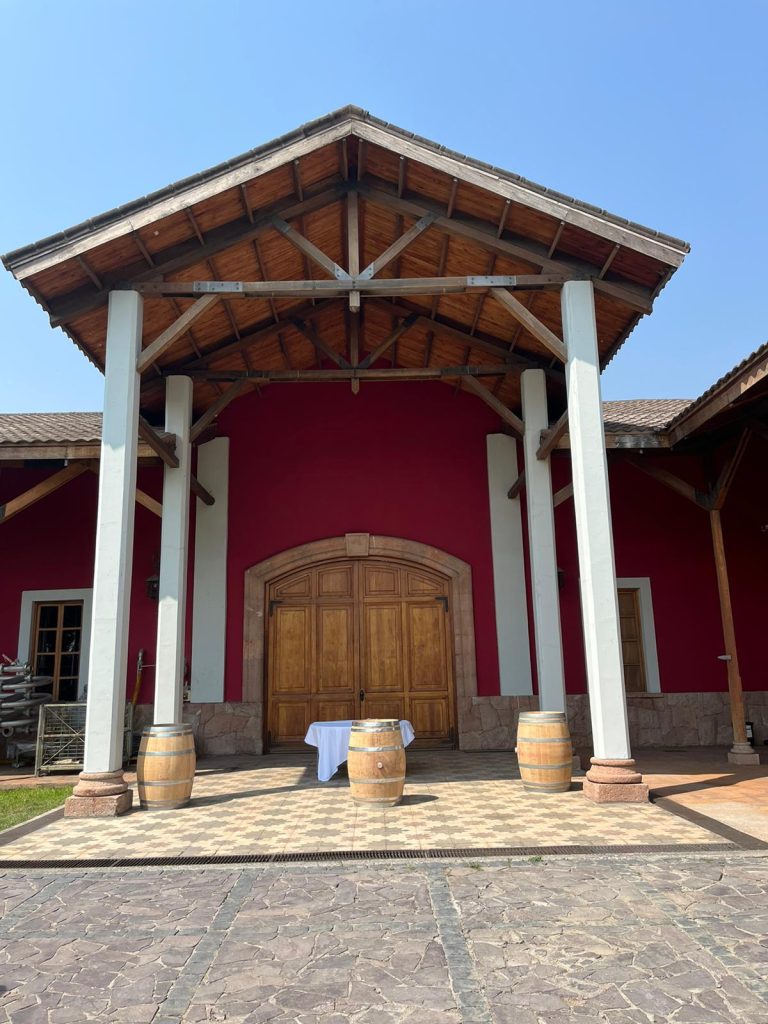
It took Mr. Siebenthal ten years to take this dream to the level of profitability. Currently his winery produces and sells 180,000 bottles of wine per year, majority of which is red wine, being exported to many countries around the world.
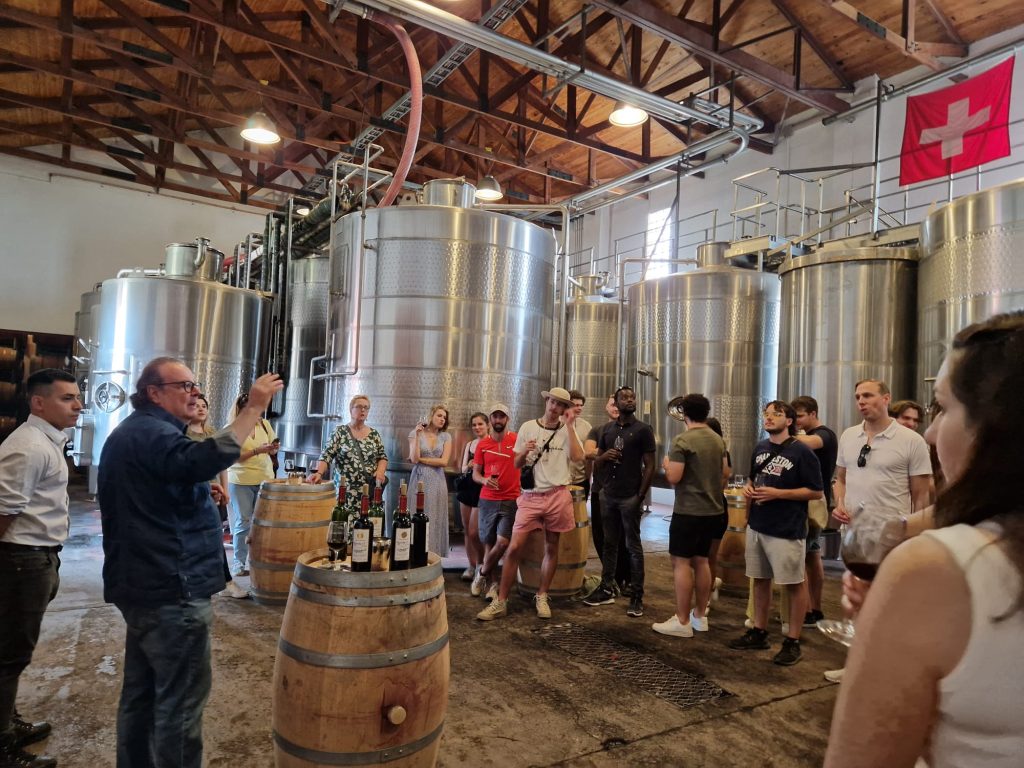
Mr. Siebenthal shared with us the challenges and the benefits of starting his business in Chile and treated us to a fine wine complemented by traditional Chilean empanadas and delicious Italian ravioli. His unique combination of Swiss quality, Italian ambience and Chilean warmth led to his success/is one reason why his business is so successful.
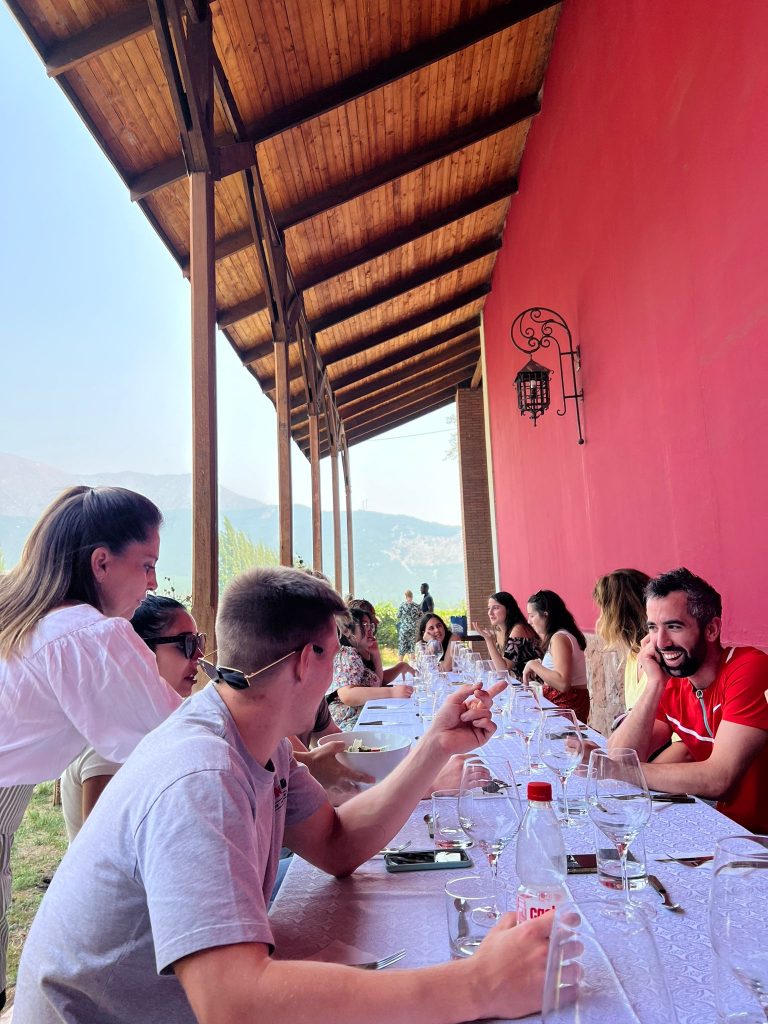
Remarkably, we found Viña von Siebenthal’s wines being presented on the shelves of the duty free store of the Santiago de Chile’s international airport when travelling back home.